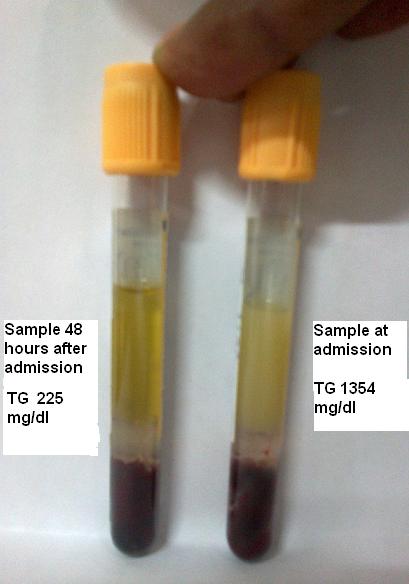Case: The patient was an African American man in his mid-20's. In the fall of the previous year he developed aches and pains, suffered a 30 lb weight loss, displayed anorexia, dyspnea on exertion, peripheral edema and mouth sores. His symptoms did not improve and he was referred to the university hospital for further evaluation.
During his admission at the university, his CBC revealed the following:
|
|
Pt result |
Unit |
Reference interval |
| RBC count |
2.5 x 106 |
cells/uL |
4.5 - 5.9 |
| Hemoglobin |
7.0 |
g/dL |
13.0 - 16.5 |
| Hematocrit |
21.7 |
% |
39 - 49 |
| MCV |
86.6 |
fL |
78 - 100 |
| WBC |
10,000 |
cells/uL |
4,000 - 10,000 |
| Platelet count |
125,000 |
cells/uL |
150,000 - 450,000 |
Hemogloblin electrophoresis revealed:

What is the differential diagnosis for this case? (Note: the electrophoresis denotes the location of common abnormally migrating hemoglobins).
The initial interpretation was as follows: Hemoglobins A (67%) and S (29%) were identified. Hgb S was confirmed by HPLC with a retention time of 4.28 minutes (Hgb S window: 4.02 - 4.28 minutes). In sickle cell trait, the usual A:S ratio is ~60:40. This ratio is not seen in the present case. As well, anemia is absent in sickle cell trait. In cases of sickle/alpha thalassemia, the percent A is higher than 60% and the percent S is less than 40%; however in this case, there is no microcytosis or preservation of the RBC count as would be observed in sickle/alpha thalassemia. Because this fits neither sickle cell trait nor sickle/alpha thalassemia, the possibility must be entertained that this is a post-transfusion sample in a person with sickle cell disease or sickle cell trait.
The clinical team subsequently advised us of the following: Immediately prior to admission, the patient was indeed transfused with 2 units of packed red blood cells for anemia for the patient's history of a "sickle cell disorder." He was then placed on hydroxyurea for presumed sickle cell disease prior to referral.
During the patient's admission, the patient was found to have SLE (dsDNA titer =>1:160 and ANA positive at 1:640). The diagnosis of acute kidney injury (AKI) superimposed upon chronic kidney disease (CKD) was rendered. The creatinine [1.62 mg/dL (reference interval: 0.8 - 1.2)] and BUN [27 mg/dL (reference interval: 6 - 20)] were both elevated. Lupus nephritis was diagnosed by biopsy.
With this history, it did appear that the patient was indeed transfused! His physician thought that the patient was suffering from sickle cell crisis; therefore, the patient was transfused and hydroxyurea was initiated. In retrospect, because the patient had no previous history of sickle cell crisis (but understood that he had some type of sickle cell abnormality), prior to this admission, sickle cell trait is much more likely that sickle cell disease.
So if the patient really did have sickle trait, why was he anemic?
The answer is that he presently has anemia of chronic disorder secondary to lupus. Hemolysis from an autoimmune hemolytic anemia did not appear likely as there was no hyperbilirubinemia.
So . . . Other than being a fascinating case, what can we learn?
Response: Be ever vigilant when the facts don't quite add up! The clinician made an erroneous assumption that the patient had sickle cell disease when the patient presented with anemia, pain, malaise and a history of some type of sickle disorder. Indeed, the patient was transfused for presumed crisis. For laboratorians, transfusion must be considered when the ratios of one hemoglobin to another are not as expected.
In latin: Semper Vigil!